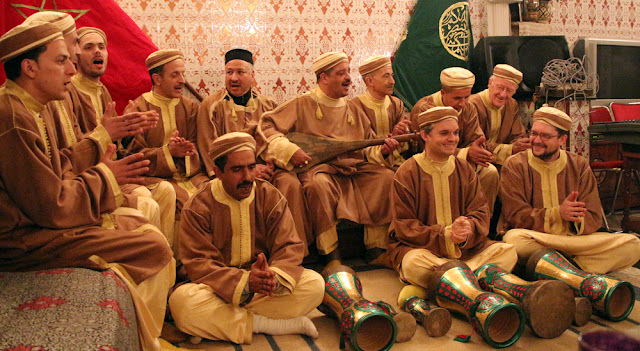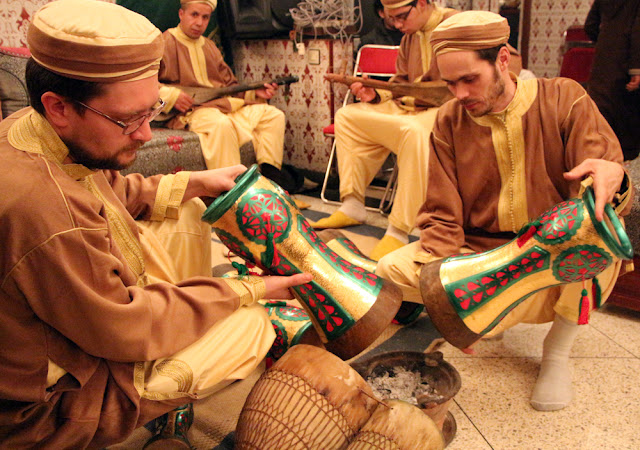Grumpy Englishman sets fire to his hotel room in Agadir
A fifty-seven year old Englishman set fire to his room at the Hotel Oasis in Agadir on Saturday after management refused to let him enter with a prostitute. The hotel management initially believed it was a terrorist act, before it was realised that the unhappy tourist intentionally burned his room before leaving.
The fire was brought under control before it spread to other rooms and fortunately there were no casualties.
According to the newspaper Assabah, the Englishman will be sued for "endangering the lives of others and destruction of private property". He was remanded in custody and will be referred on Monday to the prosecutor in Agadir.
Moroccan Medical Plant Exports
Medicinal and aromatic plants are a natural resource that can play an important role in the socio-economic development of certain economically depressed areas. In Morocco, experts believe it may well provide a viable source of income for the local population.
The medicinal and aromatic plant industry continues to diversify its agricultural production and at the same time their is advancement in the technologies it uses and the variety of products produced for export.
There are more than 4,200 varieties of medicinal and aromatic plants in Morocco, 826 which are used traditionally and just 30% sold. 90% of these plants are found in the wild and only 10% are cultivated.
The essential oil is extracted from the volatile oil aromatic plants by distillation with steam.
The international market for essential oils and aromatic extracts is growing significantly - annual turnover is estimated at approximately 19 billion dollars. More than 35,000 species of plants are used worldwide, mainly in the food industry, herbal medicine, cosmetics, perfumery and the pharmaceutical and hygiene industries.
Morocco is ranked as the 12th largest exporter of medicinal plants; one of the richest sources of medicinal plants in the world, due to the extraordinary diversity that includes nearly 400 species known for their medicinal or aromatic properties. The industry says there is potential for even greater export quantities.
Currently Morocco earns nearly $25 million for farmed medicinals and $37 million for those gathered in the wild. There are nearly 30 exporters in Morocco, a number that is growing, but it is considered still relatively low given the potential of the market. As the industry continues to grow, the government agencies responsible for the protection of national forests and range lands are faced with a challenge - how to conserve biodiversity and natural resources while creating an environment in which rural villages can participate in gathering wild plants to enhance their livelihoods.
Fez in World History published
The Al Akhawayn University publication Fez in World History: Selected Essays, was presented at the Leighton Museum in London during an event entitled “London Celebrating Fez”, organized by the Embassy of the Kingdom of Morocco in the UK.
The book was introduced by Said Ennahid, Co-Editor of the publication and Associate Professor of Islamic Art and Civilization at Al Akhawayn School of Humanities and Social Sciences (SHSS). Among the distinguished members of the attendance were Her Highness Lalla Jumala, Morocco’s Ambassador to the UK; Lahcen Haddad, Moroccan Minister of Tourism; Susan Miller, Associate Professor of History at the University of California at Davis, Faouzi Skalli, Anthropologist and Ethnologist and head of Fondation Esprit de Fès, and Said Ennahid, Associate Professor of Islamic Art and Civilization at Al Akhawayn School of Humanities and Social Sciences. The closing of the event was crowned by an Andalusian music concert featuring the Briouel Orchestra.
Fez in World History was a major part during the event which celebrated the 1,200th anniversary of the founding of the ancient Moroccan city of Fez.
Al Akhawayn University and Fondation Esprit de Fès had organized in 2008 an international conference to explore the global dimension of the city through a multidisciplinary lens. A meeting of several Moroccan and international scholars in Ifrane then triggered an intense intellectual debate that extended several months afterwards and culminated in the publication of the book in 2011.
Fez in World History: Selected Essays (2011) is co-edited by Said Ennahid and Driss Maghraoui, Associate Professor of History at SHSS, and is published by Al Akhawayn University Press.
Fez folk let their hair down
 |
| Dancing - even in the kitchen! |
Thursday night was party night in Fez and Fred and Cathy opened the doors of Riad Laaroussa to some of the most strangely dressed individuals seen in the Medina for some time.
 |
| Cathy and Fred tabletop dancing |
 |
| Vanessa Bonnin and Karina Dubner |
 |
| The women of Riad Laaroussaa drum up a storm |
Morocco aims to accommodate one million Spanish tourists in 2015
According Minister of Tourism, Lahcen Haddad, speaking in Madrid this week, Morocco wants to attract one million Spanish tourists in 2015. The Kingdom has received nearly 800,000 Spanish tourists last year, an increase of 4% compared to 2011 and "our ambition is to happen in two years, one million tourists," said Mr. Haddad at the opening of the 33rd edition of the International Tourism Fair, FITUR 2013.
The Spanish tourism market, which attracts visitors from around the world, is "very important" for Morocco given the geographical proximity and cultural growth of tourist flows between the two countries despite the economic crisis in Europe. Spain is the second largest source of tourists to Morocco after France. The aim is to increase the number of Spanish visitors to the Kingdom, but also to forge new partnerships with tour operators to introduce Spanish combination products between the two countries in order to attract tourists from emerging markets such as Japan, India, Brazil, China and several Latin American countries.
Fez welcomes Koreans
Regular readers will be familiar with the positive impact on Fez tourism of Suzanna Clarke's best selling book A House in Fez. Locals and guest house owners are quick to tell you of the number of visitors who have read the book and been drawn to the Medina. This week a Korean family arrived with copies of A House in Fez in English and Korean. They were thrilled to not only get their books autographed but to also be invited to tour Riad Zany.
 |
| Suzanna Clarke explaining the restoration details |
Great Britain's media push in Fez
The View from Fez team are in debt to several readers for bringing a strange headline to our attention.
"The Embassy of Great Britain opens regional newspapers in Fez"
It seemed too good to be true and, of course, it wasn't so. It was, we believe, a translation error in a local news outlet. To our knowledge the good folk at the British Embassy are not about to put the frighteners on Rupert Murdoch by bursting into print. But it seems the Embassy of Great Britain wants to develop its relations with the regional press in Fez. The communication team at the embassy, led by Hugh Cleary, this week met a group of journalists from different media for a debriefing on "British cooperation with Moroccan civil society and political activity, economic and local culture". The discussions focused on the constraints of the regional press and its contribution to the anchoring of the freedom of expression and democracy, including the young and promising experience of private radio stations. Sadly the British Embassy appears not to have involved the social media in the exercise. Two other English language social media sites told The View from Fez, that they had not received an invitation to the event.
From reports that filtered out, the GB Embassy is not about to open an office or a representation of Britain in Fez such as those in Rabat, Casablanca, Marrakech and Agadir. Mr. Cleary is reported as saying that that meeting with the press is part in regular contact with the actors of civil society, particularly the media. Hopefully they will include the major players in the social media scene in the future.
A big week for the Hamadcha Sufis
The seventh day after the celebration of the Prophet's birthday is a special one for the Hamadcha Sufi groups - the celebration of their Saint, Sidi Ali ben Hamdush. A highlight this year was an all-night ceremony. The View from Fez was fortunate to be able to participate in the event and bring you these images.
 |
| The Fez Hamadcha group |
 |
| Abderrahim Amrani - Hamadcha leader |
 |
| Frédéric Calmès in full flight! |
 |
| Tightening the drum skins |
Photographs: Sandy McCutcheon
and Yassine Houari (pictured below)
SHARE THIS!






No comments:
Post a Comment